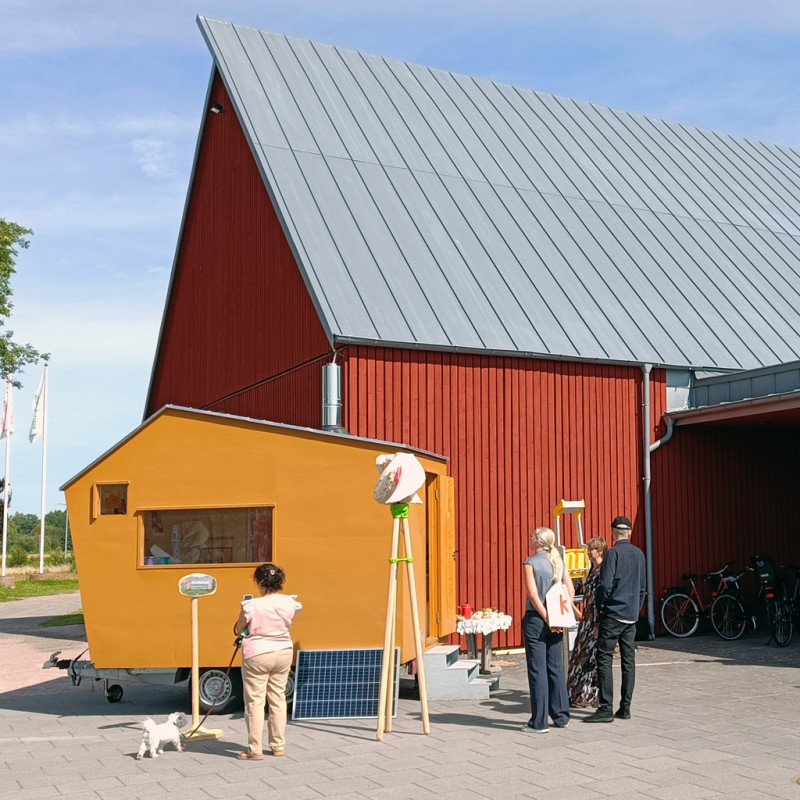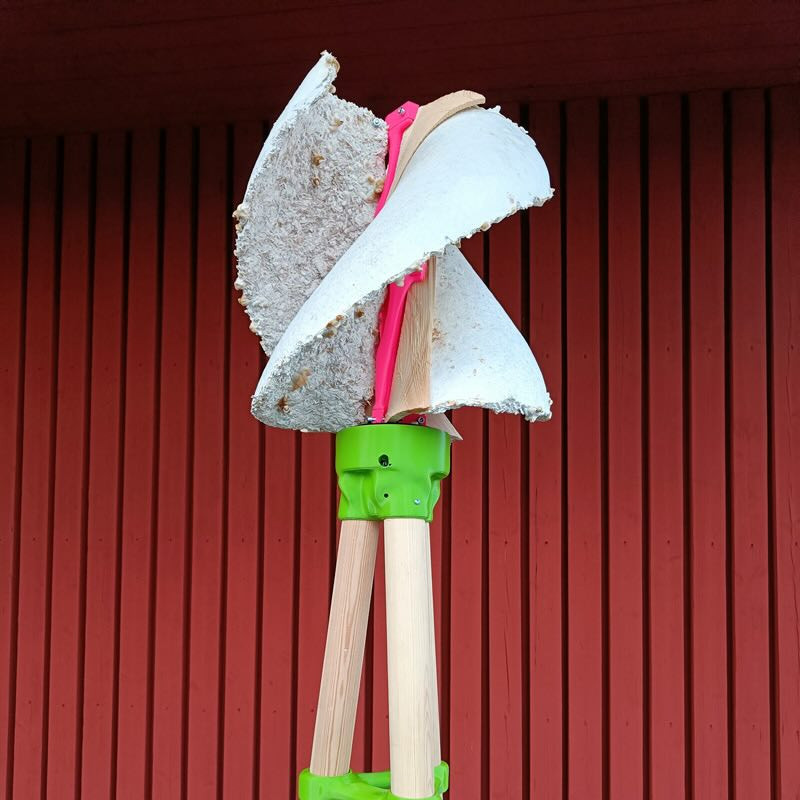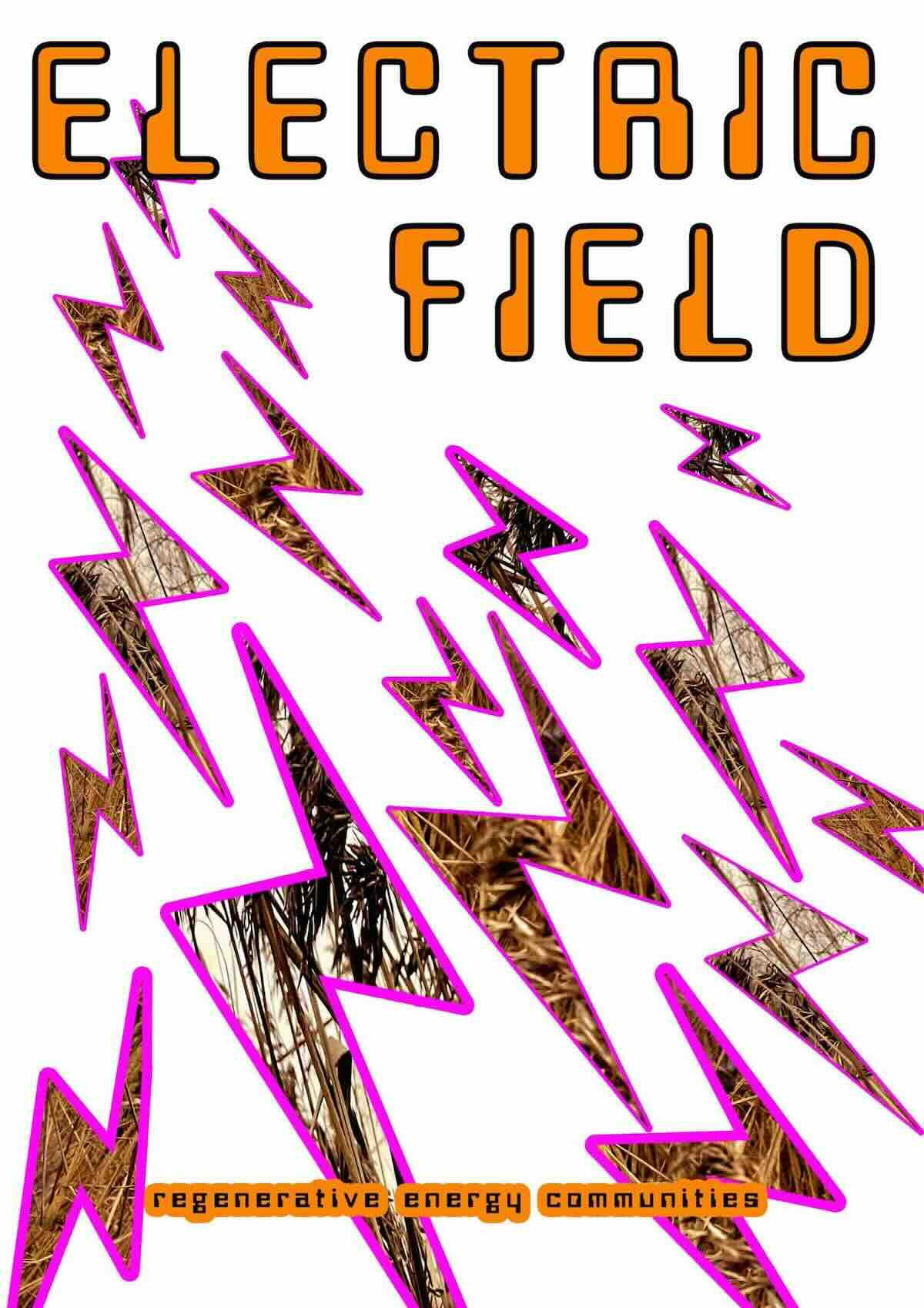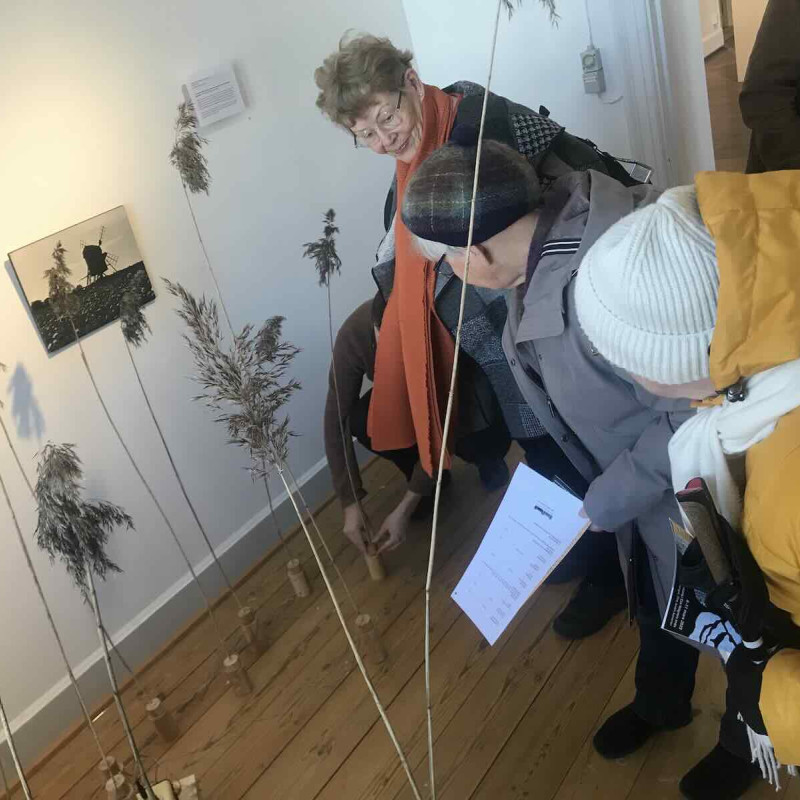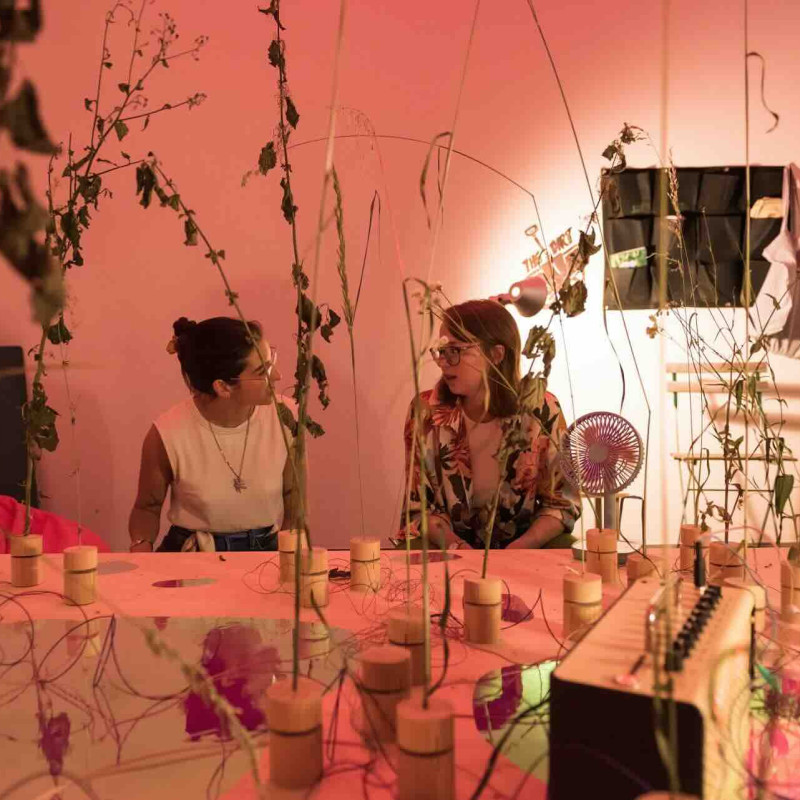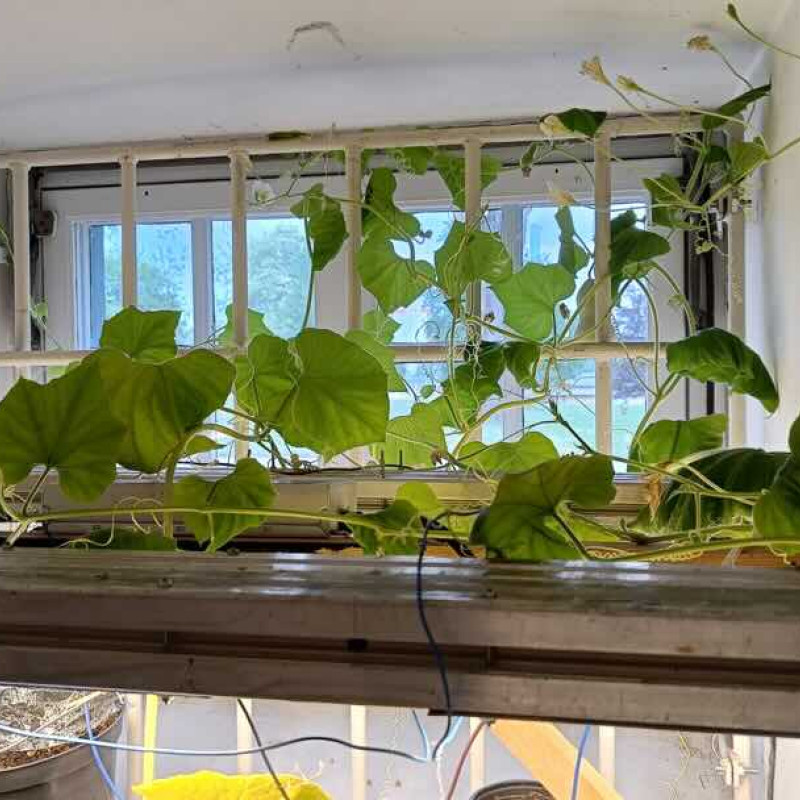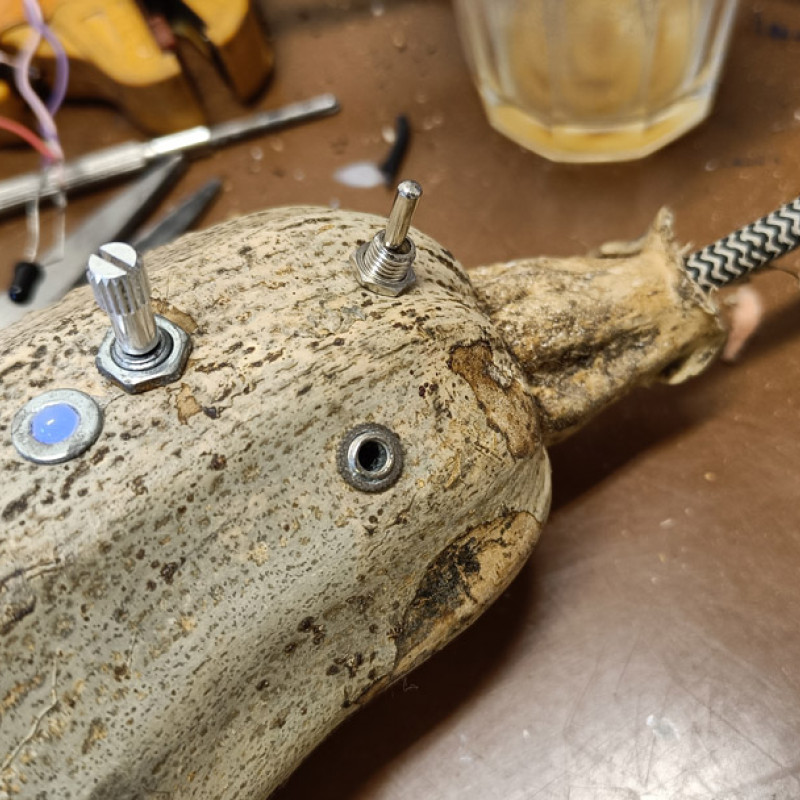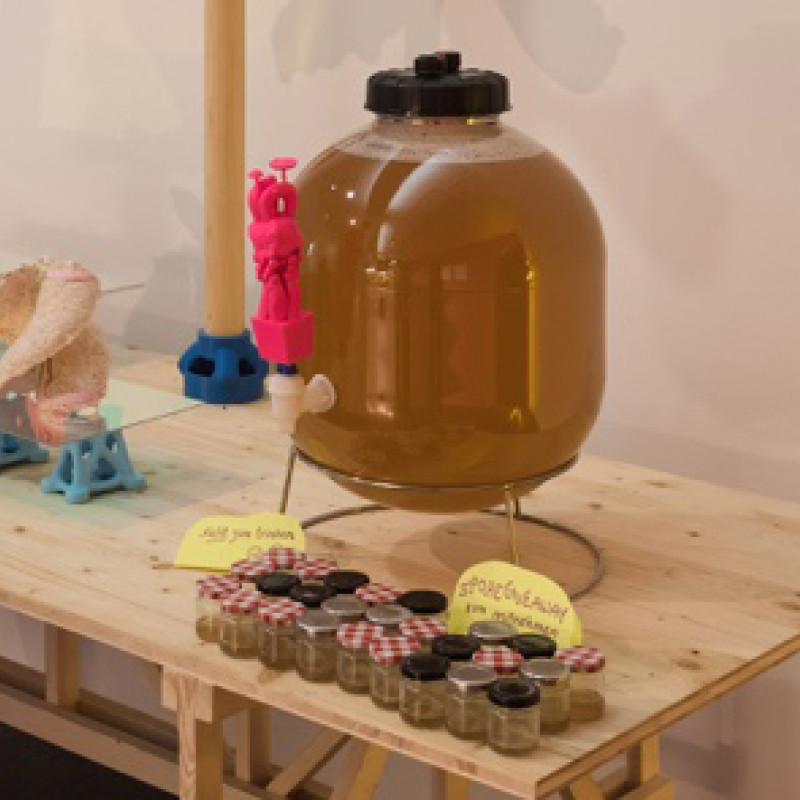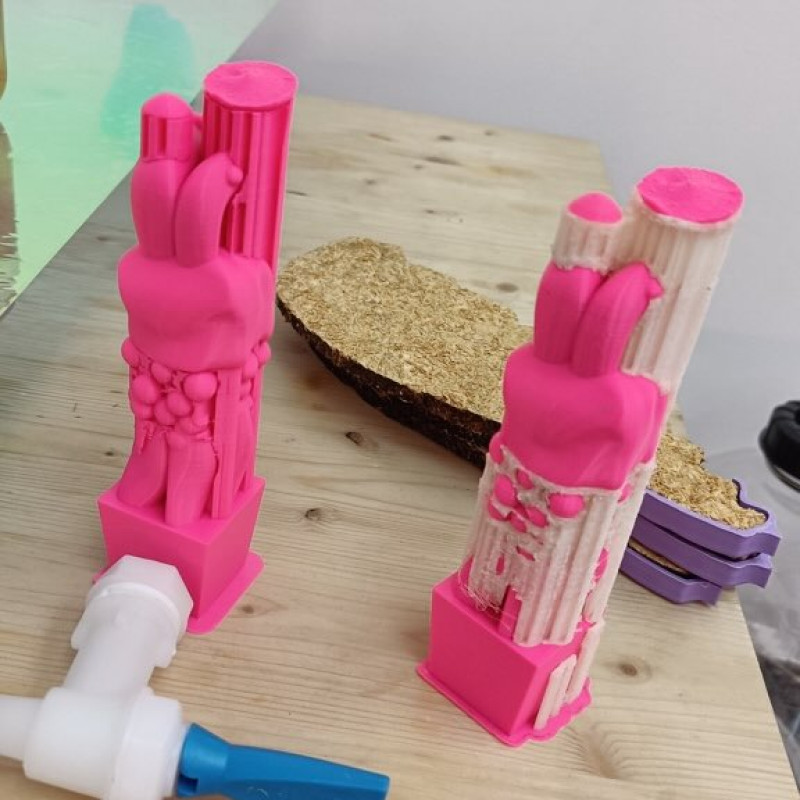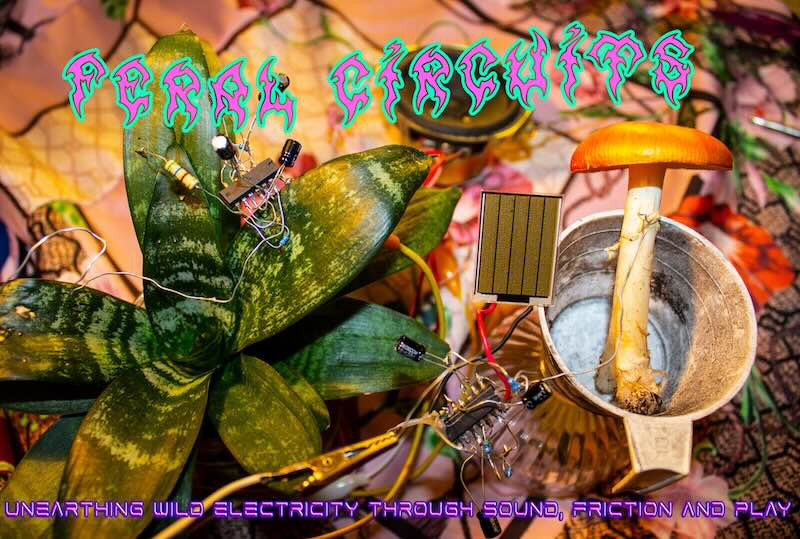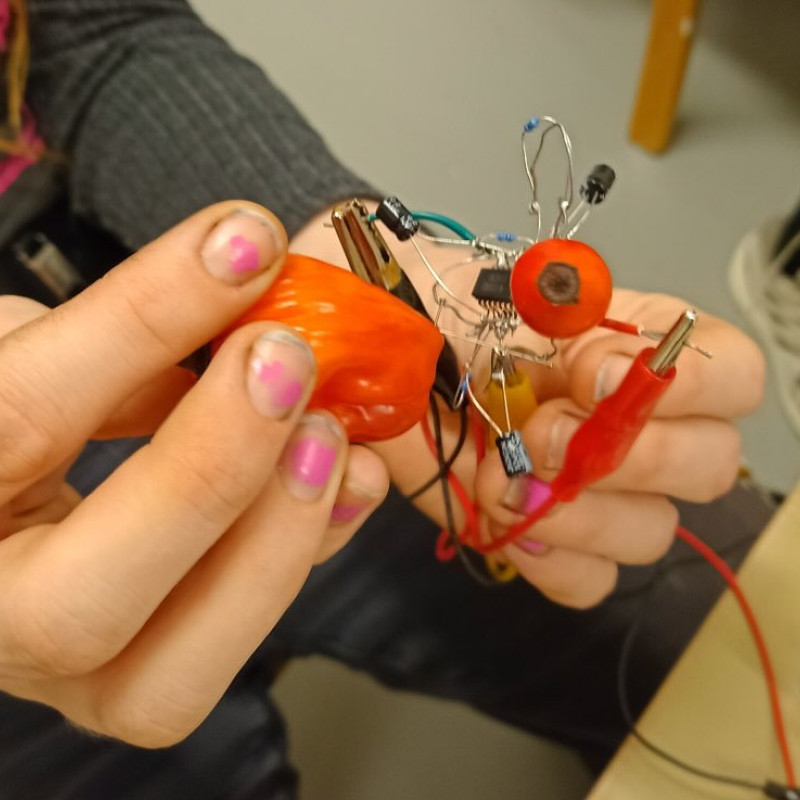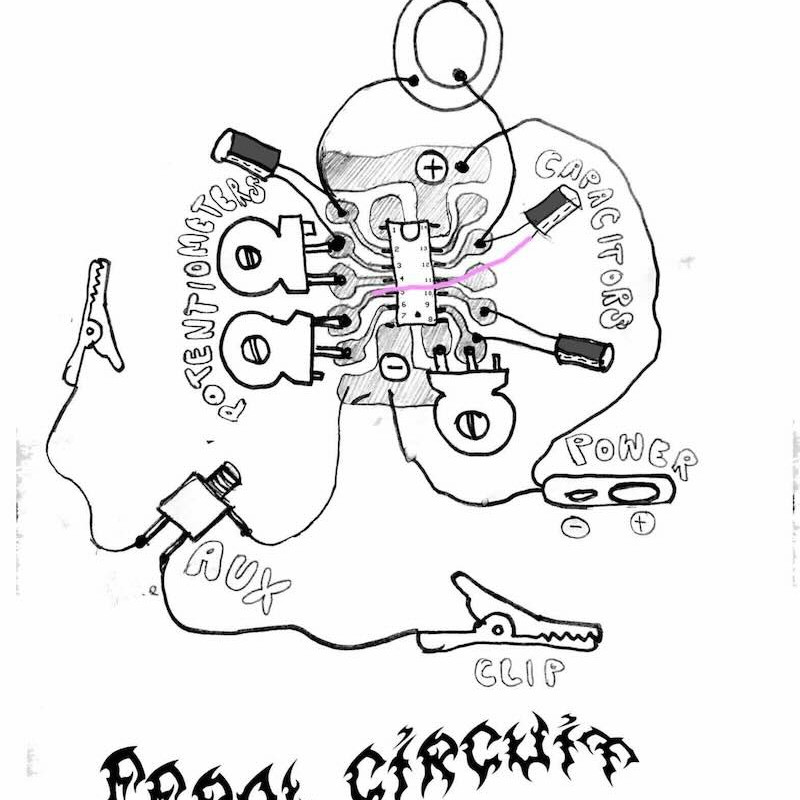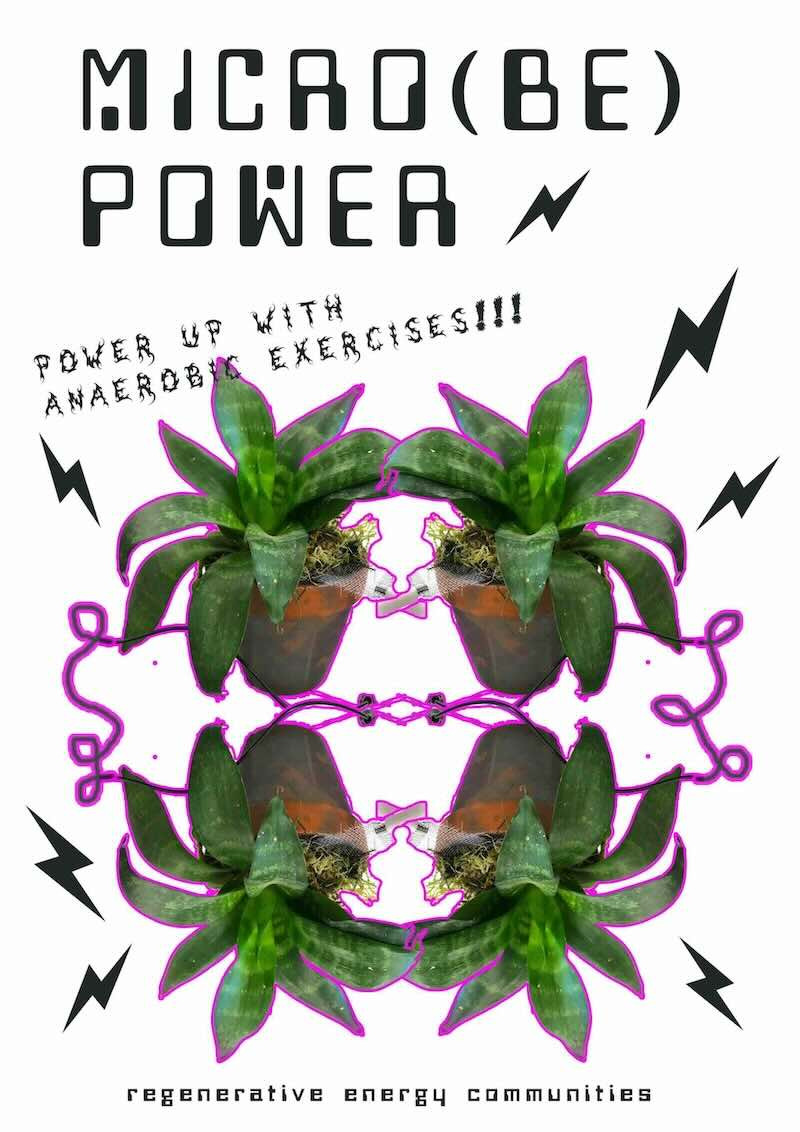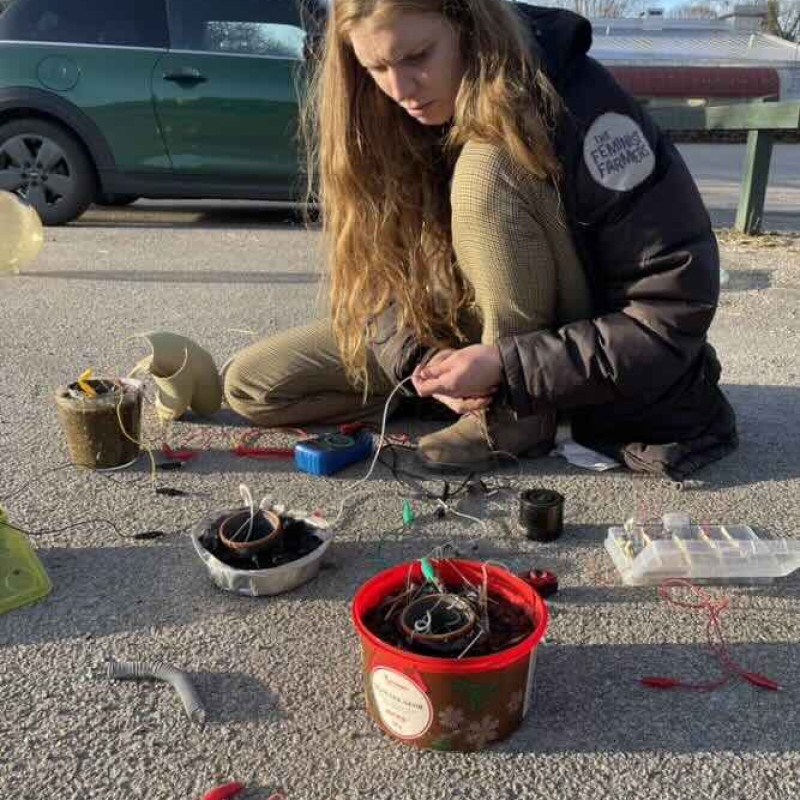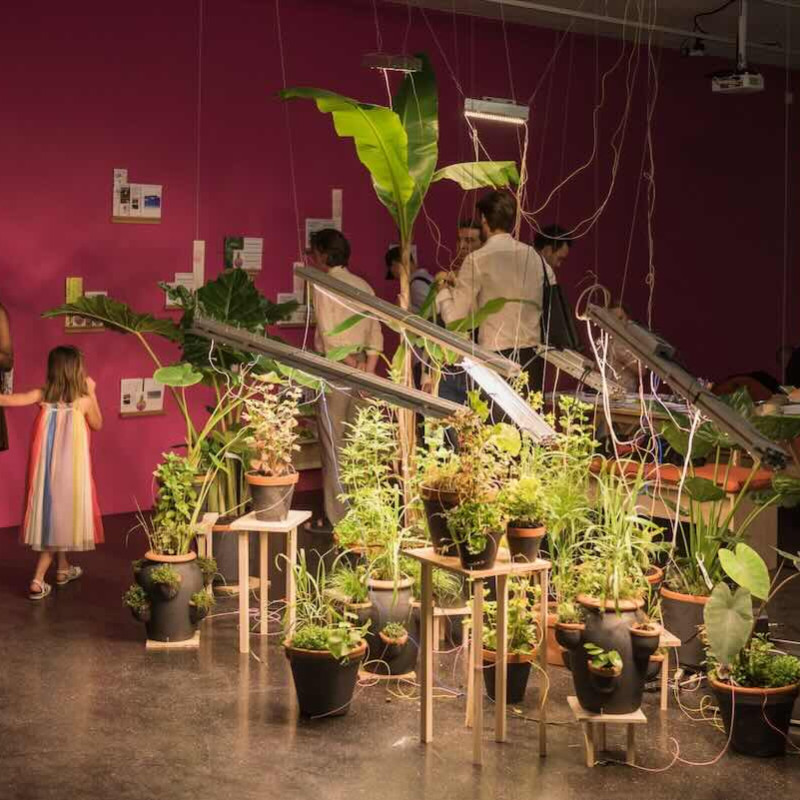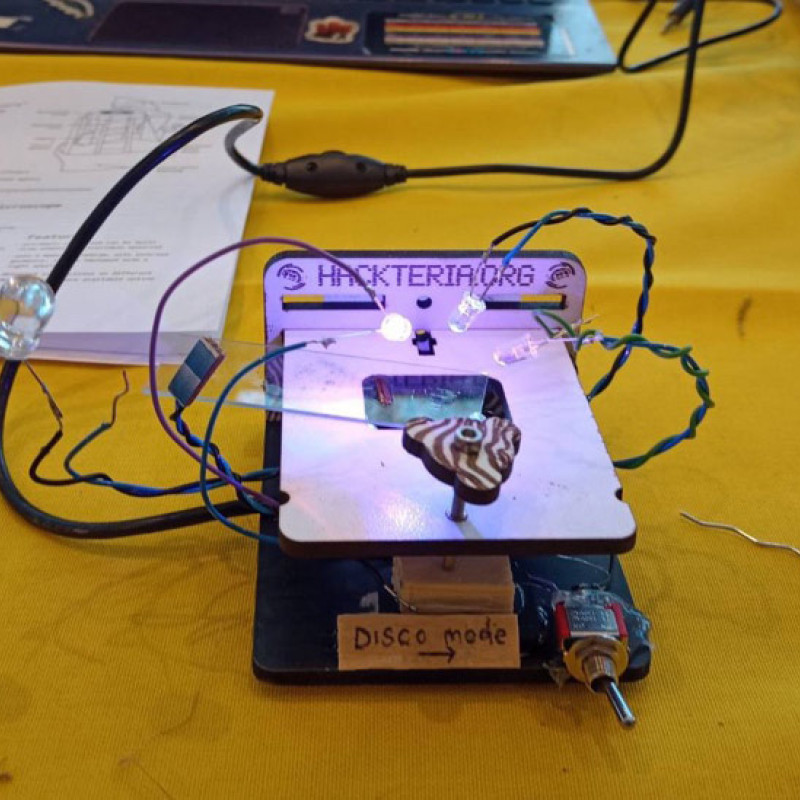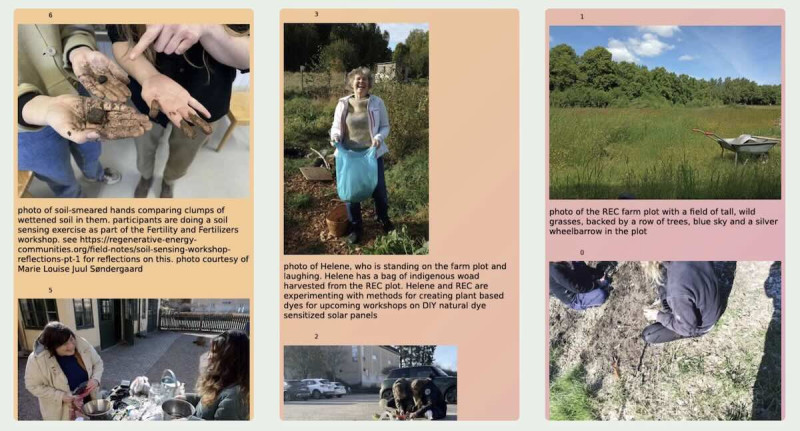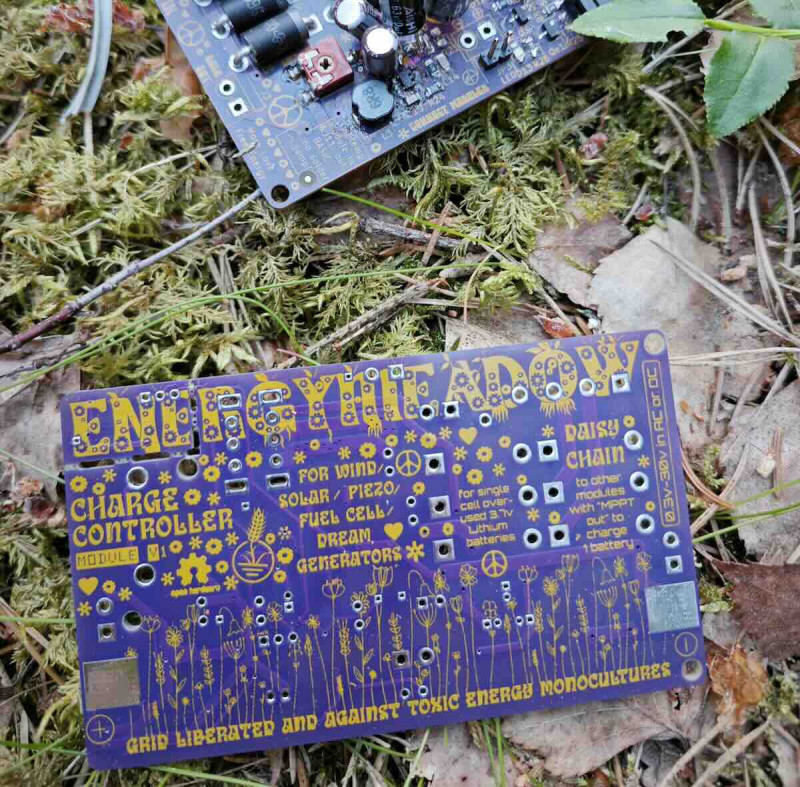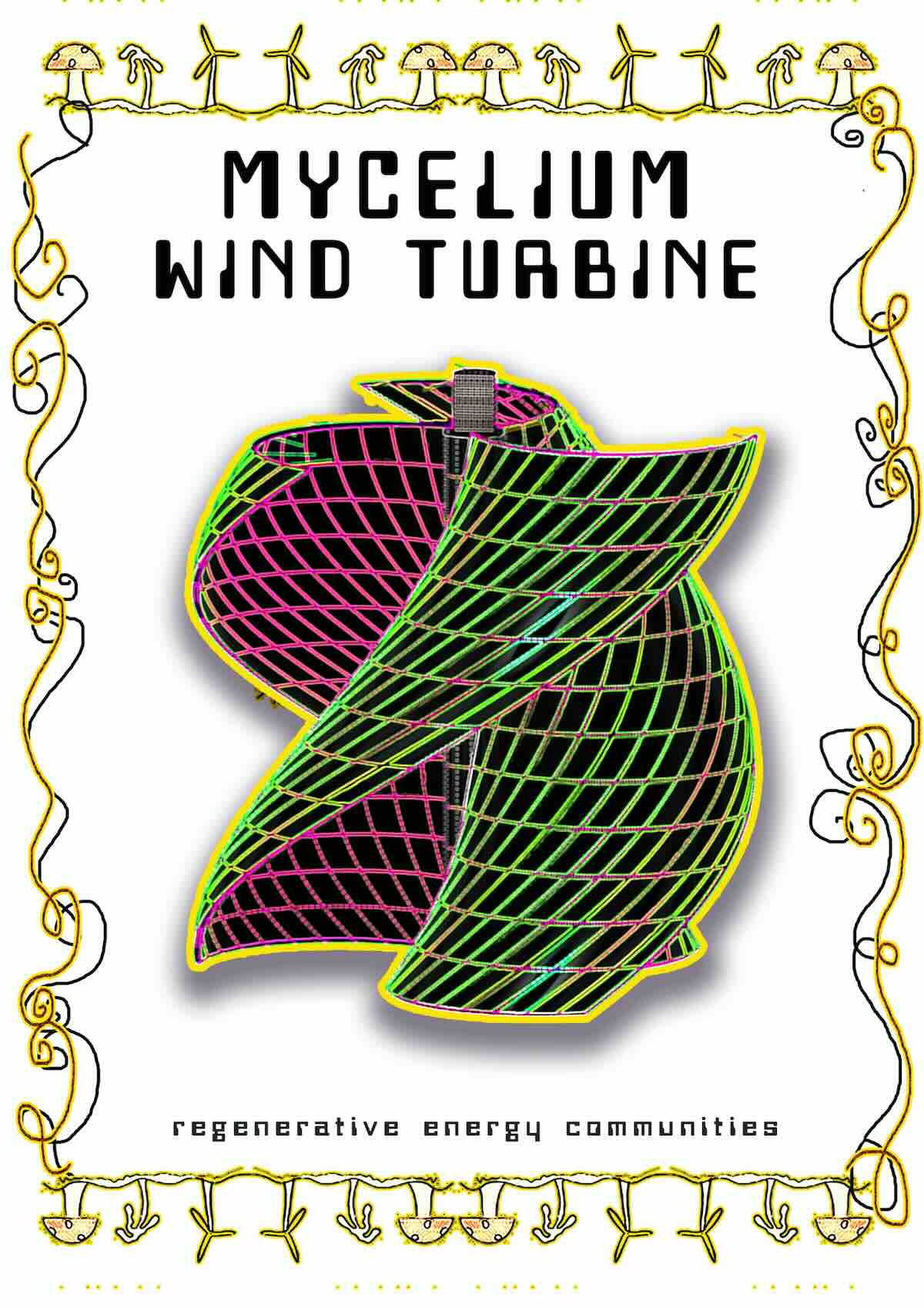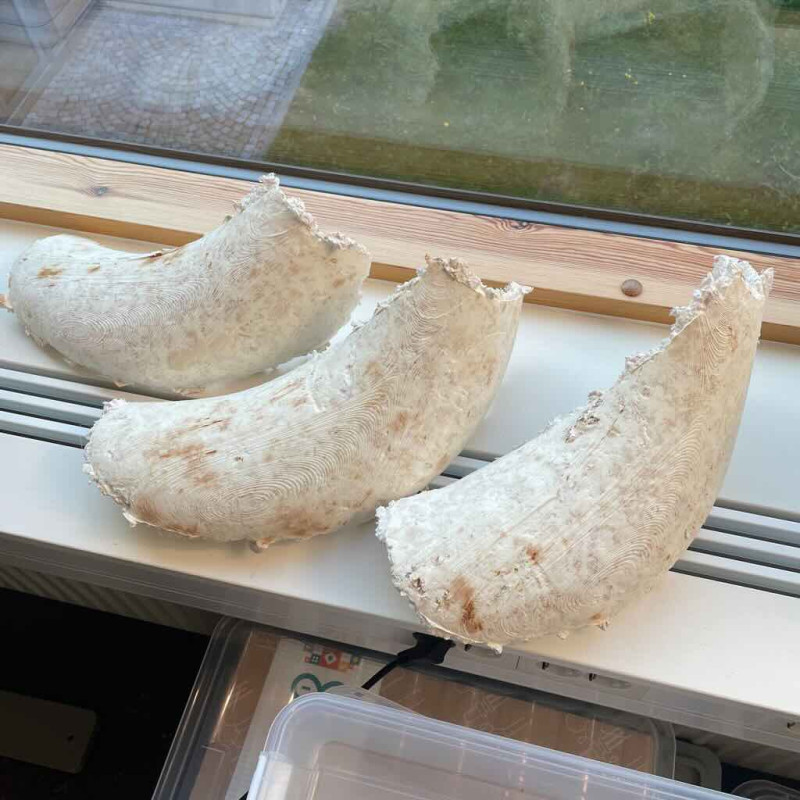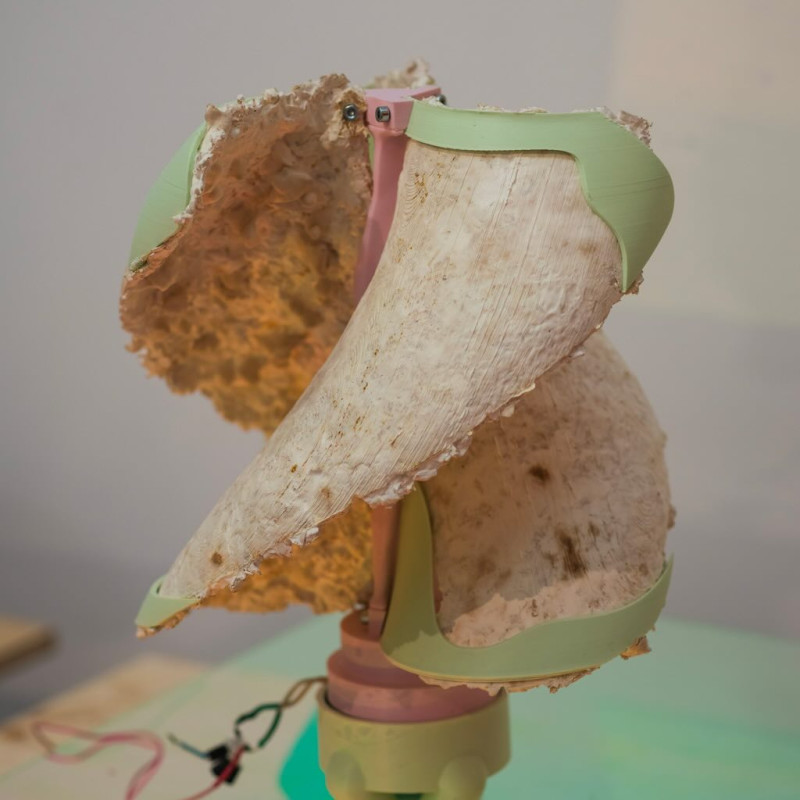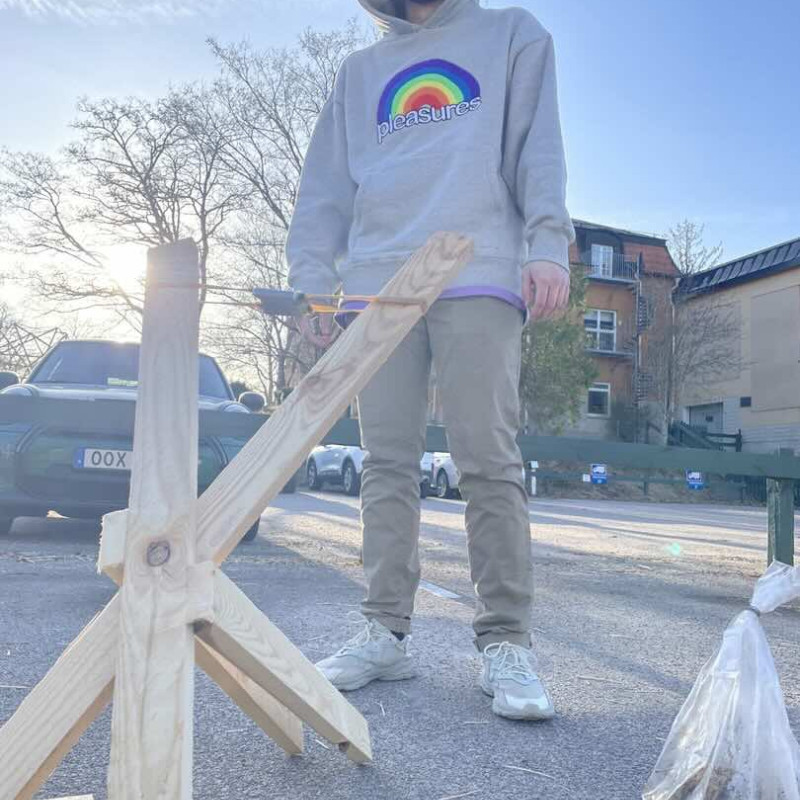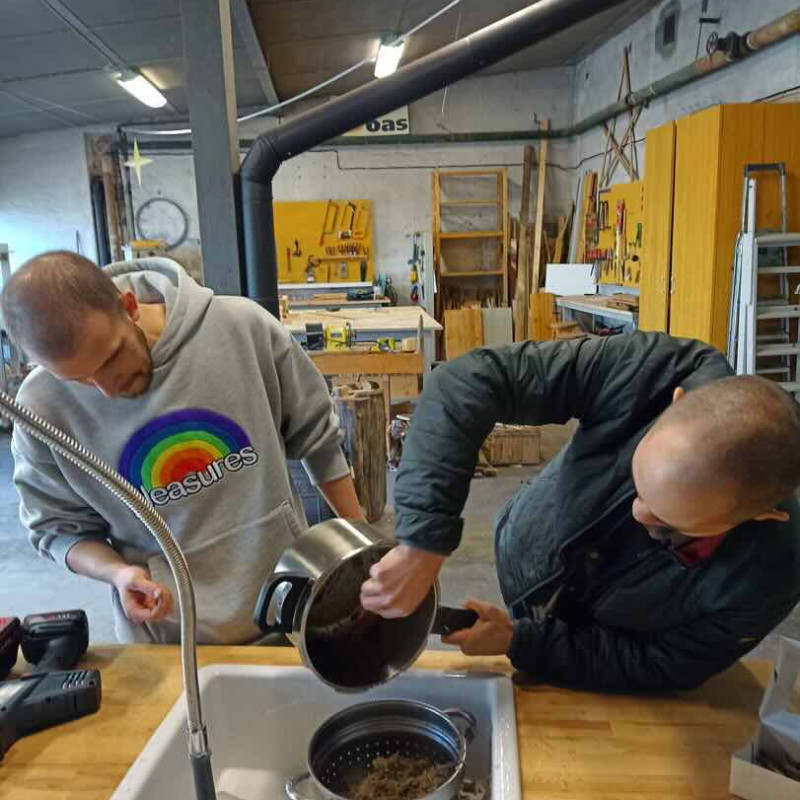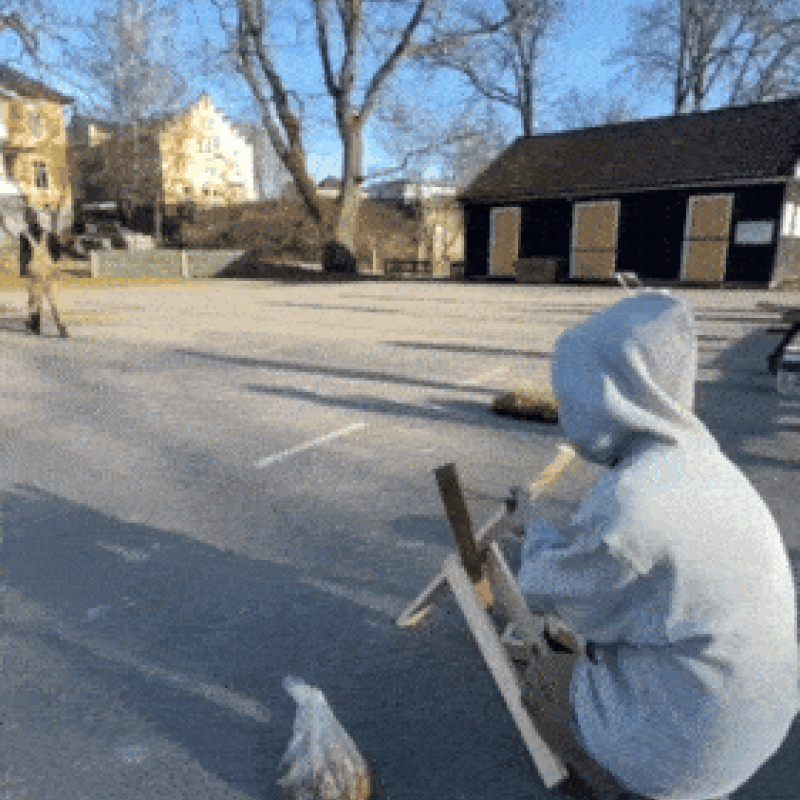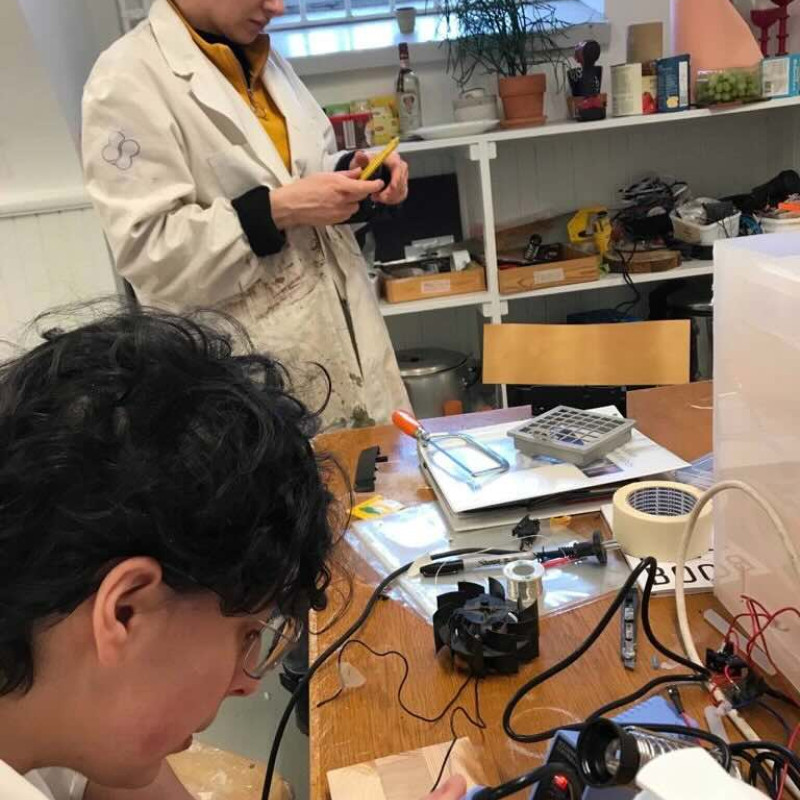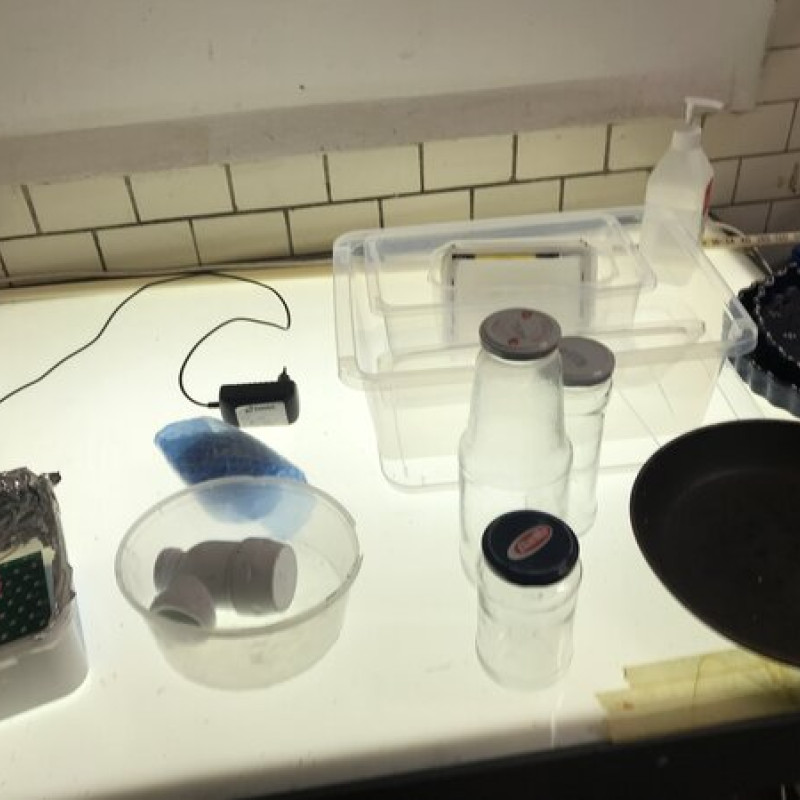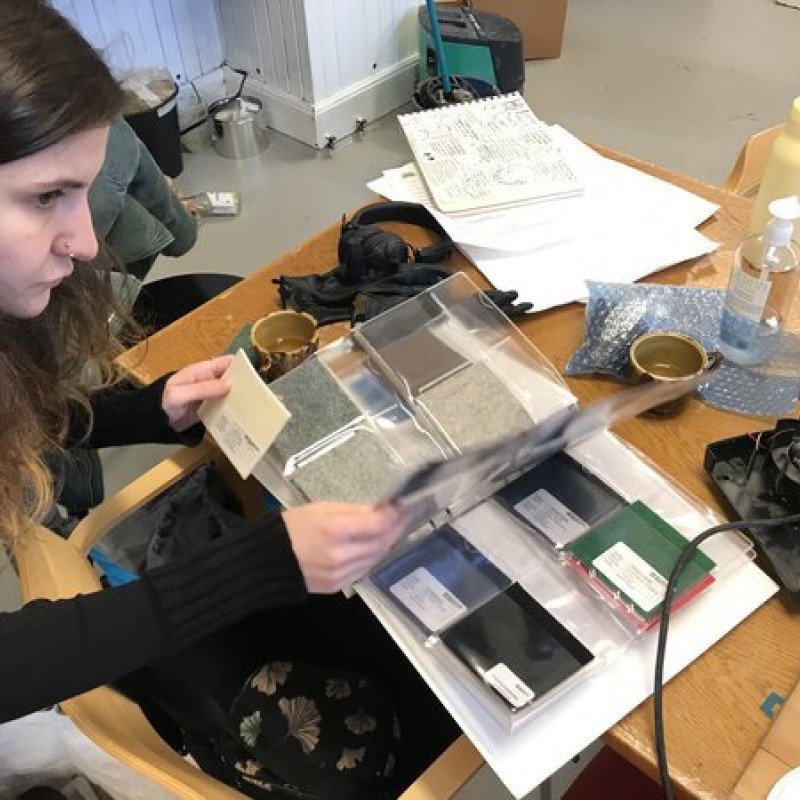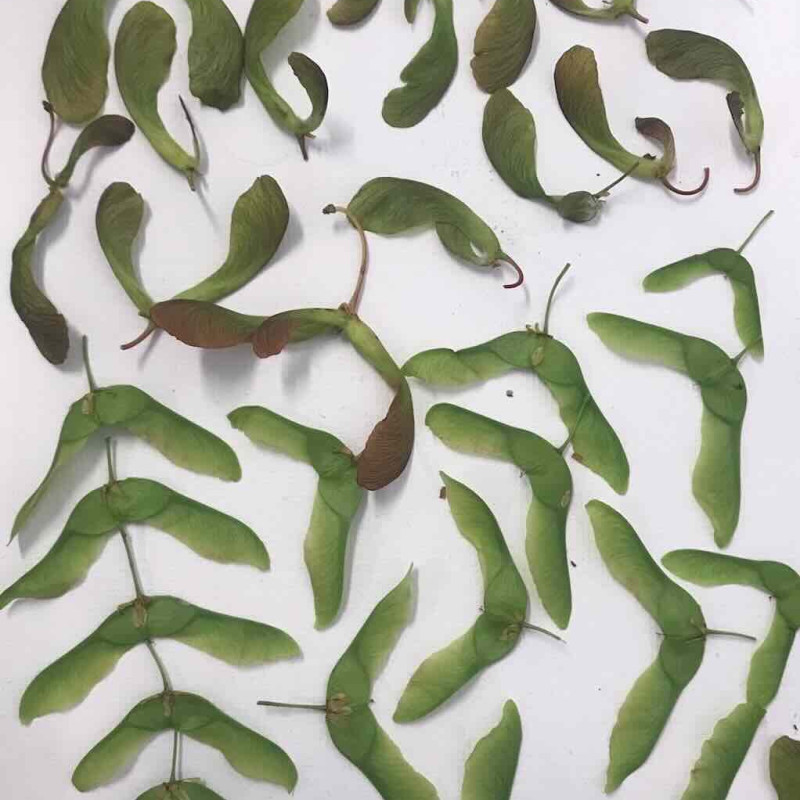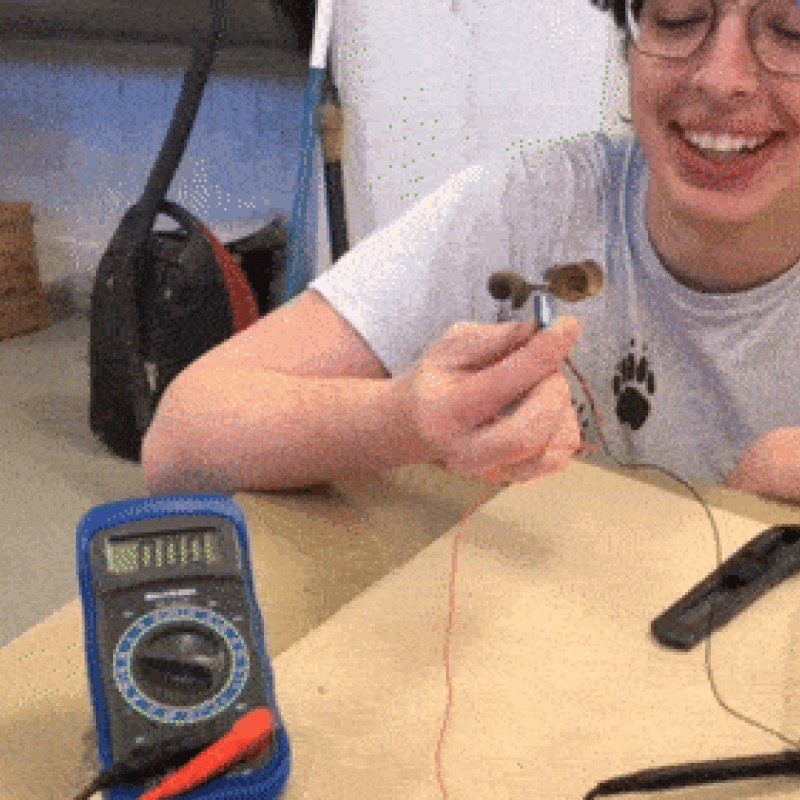Community prototypes
With a view to reconsider current approaches to renewables and the so-called green transition, we worked with prototyping small scale forms of sustainable energy provision inspired by farming communities in Växjö, Sweden. Engaging as artists, designers and growers with questions of energy and agriculture has involved implicit challenges and an ongoing question of how to collectively build regenerative imaginaries that support ties across soils and damage narratives of the smooth continuity of energy.
In the research of REC, we worked to address this crisis of infrastructure and imagination through the development of a series of diversified, small-scale DIY low-powered microgeneration prototypes designed for use in public-facing workshops and experimental urban farming settings. Each prototype treats seriously what it might mean to take principles and propositions for soil and ecosytem health as a model for exploring what alternative forms of energy research and prototyping might come into being. They are learn it together with others experiments for collectively exploring propositions and principles of energy and agriculture. If you do try any of them out, please feel free to share your experiments and stories with us, we would be happy to learn of further iterations!
Windternet
Windternet is a designerly exploration of how we might create alternative and sustainble community energy infrastructures. Consisting of a DIY wind turbine with blades made from mycelium and a custom made affordable low-voltage solar/wind hybrid charge controller that can power a small web server, the prototype addresses a practical question of how to complement solar energy provision during the darker Swedish winters. Additionally, in the use of alternative mushroom mycelium based materials and recycled e-waste motors, the prototype also aims to address challenging questions of how both renewables and computing are dependent on extractive mining practices. In response, the Windternet project explores how working with regenerative commitments can bring to life alternative approaches to renewables and sustainable technological prototyping more generally.
Want to know more? Download our paper published at Computing within Limits 2024: https://computingwithinlimits.org/2024/papers/limits2024-snodgrass-windternet.pdf
Windternet is a collaboration between Regenerative Energy Communities and Solar Internet. Collaborative website for the project: https://solarinternet.org/windternet/
Electric Field
Electric Field is (1) a reimagining of the wind turbine, without extractive use of minerals and land, (2) a method for regenerative prototyping, (3) a DIY micro energy wind turbine for hands-on experimenting with energy and regeneration.
Electric Field prototypes an energy alternative that takes biodiversity, soil health and non-extractive uses of land and minerals as core propositions for creative experimentation with energy. It can be tried out in hands-on collective workshops with others and we share it here in this zine for anyone to experiment and iterate upon. Most of all, Electric Field is committed to a core ongoing aim of Regenerative Energy Communities, namely the question of How can we make space for communities to feel that both food (farming) and energy (electricity + electronics) are not something that is done to us, but that we do?
Calabash speakers
Calabash, developed by the first materials scientists as sustainable containers thousands of years ago in Southern Africa, turn out to be wonderfully shaped for resonance and amplifying sound. We grew some in our studio (which we had to hand pollinate, pictured here), as well as harvesting some gourds from our neighbours on the farm. Then we fitted in some e-waste speakers and a little low energy amplifier. Charged by solar, it became a lovely boombox to take with us on adventures. We also made one powered by USB, with bluetooth connection.
Sporezilla
Made for the Energy Giveaway exhibition, a full keg of Reishi liquid spawn ON TAP distributing community biomaterials projects and healthy teas!
Feral Circuits
This low power synthesizer, introduced to us by energy art friend Ralf Schreiber, has been an important companion throughout the project, allowing us to test/hear/feel different electrical energies generated by our prototypes and environments. Instead of relying on multimeters and other standard numerical measuring devices (which are not so good at handling small, intermittent energies anyway), the feral circuits have given us a more embodied sense of electrical energy, and a palpale imaginary of how electronic circuits could be more alive/sensitive/ and part of an ecosystem.
Learn more about the circuit and how to make your own: https://regenerative-energy-communities.org/feral-circuits
Micro(be) Power
In this zine we feel-out wild electricity by making Microbial Fuel Cells (MFCs) from non-specialist and environmentally friendly materials - and seeing what and how we can power things with them. Re-futuring the narratives and power dynamics of energy generation, electrical technologies, waste - for the Regenerative Energy Communities we need!
Making our own electricity from scratch (with some world-feeling) let's get down with the magical amazing world of microbes and become creatively alive to electricity. Making Microbial Fuel Cells allows us to do all this while questioning and demystifying the dominant narratives of energy–– especially the production, storage, transmission and consumption of this curious force. When we make Microbial Fuel Cells we might gain a deeper respect for these vital organisms, and feel how electronics can work with such low power. In this process we learn from other organisms who work with electricity in a regenerative way in their ecosystems, instead of in a toxic way, like much human-centred engineering does.
E-waste microscope webcams
Another tool which allowed us to explore our surroundings with greater awareness was a microscope, allowing for reconsideing our place in the ecosystems we are part of. We built two of our own, made from webcams found in the trash, using the protocol developed by Hackteria. You can find their documentation here https://hackteria.org/wiki/DIY_microscopy
The one we made had a 'disco mode', with a colour-changing blinky LED and was used by highschool students during the Science City school fair.
XMPP x REC
In REC we resisted posting photos onto the dominant platform capitalist photo sharing sites of the present. These platforms share in similarly damaging and extractive approaches as those of dominant actors in energy and agriculture (e.g., unsustainable practices of extraction and energy use), and we decided to try to hold to more regenerative propositions in our approaches to uses of technology in our work.
This lead us to discussing what horizons and forms regenerative media practices might take. For our Energy Giveaway at the Humuspunk Library exhibition, we reached out to Cristina Cochier of the varia collective to see if they could build a low energy regenerative media interface for posting photos to and we can now share the results, which are available to follow here: REC live!
Energy Meadow
In conjunction with a small raspberry pi server from the Solar Internet project, we discovered early on in our work on Windternet that we couldn't find anyopen source, small scale (5 volt) hybrid power management and charge systems for wind generators and solar panels on the market that were not glued shut in a finished, ready-for-glamping product. Despite not being especially familiar with electrical engineering, we have delved into the rabbit hole of analogue power electronics, focusing on developing a low cost, easily replicable, open source USB compatible system which could work with, as opposed to against, all the intermittencies and inefficiencies of a small generator.
This resulted in Energy Meadow, a circuit that has been designed so that it can work not only with wind and solar, but various other types and scales of electrical generators (e.g., homemade piezoelectric generators, microbial fuel cells) which can be "daisy chained" to each other. At 5V instead of 12V it decreases energy loses and can take in smaller chargers from DIY power generators. Want to know more or build your own? Download instructions!
Mycelium Wind Turbine
In REC we introduce a range of what we characterize as regenerative methods and practices, designing with compost-promoting regenerative materials, hybrid combinations of computational tools and biological processes, slow engineering, speculative poetics and a transdisciplinarity situated within the longstanding innovations and emerging traditions of various agroecological communities.
We (amongst others) think that mycelium (mushrooms' own root systems) can be a formidable alternative as a regenerative material in constructional applications, including in windturbines. It also holds the possibility to promote soil health and mycoremediation of heavy metals from topsoil (mycoremediation being a fungi-based remediation that is able to remove a range of different contaminants from damaged environments).
As we now discuss quite often what the future would look like in terms of a sustainable energy transition, we find it interesting to pose the question: what if everybody could grow their own energy source?
Our experiments with mycelium and digital fabrication included Open Lab workshops with others exploring different DIY growing strategies and eventually went on to inform our current work on the Windternet wind and solar prototype.
Poems to be played by a micro wind turbine
together
(¯`·..·(¯`·..· thank you ·..·´¯)·..·´¯)
anti-state
thank you
don't forget to breathe
take this energy
smile ⎦˚◡˚⎣
wind for you and me (‾▿‾) (‾▿‾) (‾▿‾)
windmills are peaceful, windmills are revolutionary
(¯`·..·(¯`·..· SPINNY! ·..·´¯)·..·´¯)
▂▃▅▇█▓▒░۩۞۩ wind is earth movements and light, the sun's migrating breath ۩۞۩░▒▓█▇▅▃▂
wind is invisible. we can only see wind when it's moving
i used to blow dandelions. i used to smoke
the sand from the Sahara blew all the way to Växjö last year...
Wetlab Witches' Biolab
Several final year students from the Design+Change course at Linnaeus University were working with fungi for their degree projects. Betyul and Mathilde with plastic-decomposing fungi and related imaginaries, and Smaranda with fungi+witchcraft. Concurrently at the REC studio, Daniel was developing methods for growing mycelium materials, and we're really interested in all the ways microorganisms intersect with energy and agriculture (soil microbiomes, phyto-pathogenic fungi, mycorrhizal fungi, bacterial and myco remediation, fermentation, electrogenesis). So Miranda and the students turned the little side room of our studio into a wetlab! This idea came from some exciting discussions at an Open Lab and descriptions of the research that spun out of this can be read here:
::: Mathilde Lasnier: https://designportfoliolnu.se/studentwork/fungi-n-plastics/
::: Betyul Hafazoglu: https://designportfoliolnu.se/studentwork/the-habitat-a-multispecies-realm/
::: Smaranda Sirbu: https://designportfoliolnu.se/studentwork/witchcraft-futuring-the-knowledge-below-the-surface/

